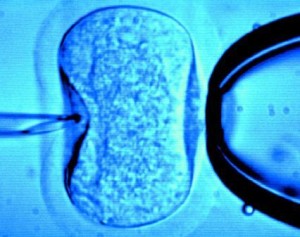WITH the introduction of universal pre-K in New York City, we have created a new entry point into our public school system. This raises a key question: What do we want our children’s first experiences in school to be? What does a good education look like for 4-year-olds?
This summer, Bank Street College of Education led training for 4,000 of New York’s pre-K teachers, including both veterans and hundreds of people who started teaching pre-K for the first time last month. Worried teachers talked about how the pressure to achieve good outcomes on the third-grade state exams has been trickling down to early childhood classrooms in the form of work sheets, skill drills and other developmentally inappropriate methods.
The problem is real, and it is not unique to New York City. Earlier this year, Daphna Bassok and Anna Rorem, educational policy researchers at the University of Virginia, found strong evidence that current kindergarten classrooms rely too heavily on teacher-directed instruction. Their study, “Is Kindergarten the New First Grade?” revealed that the focus on narrow academic skills crowded out time for play, exploration and social interaction. In a 2009 report for the Alliance for Childhood, “Crisis in the Kindergarten,” Edward Miller and Joan Almon reported that kindergarten teachers felt that prescriptive curricular demands and pressure from principals led them to prioritize academic skill-building over play.
This is a false choice. We do not need to pick between play and academic rigor.
While grown-ups recognize that pretending helps children find their way into the world, many adults think of play as separate from formal learning. The reality is quite different. As they play, children develop vital cognitive, linguistic, social and emotional skills. They make discoveries, build knowledge, experiment with literacy and math and learn to self-regulate and interact with others in socially appropriate ways. Play is also fun and interesting, which makes school a place where children look forward to spending their time. It is so deeply formative for children that it must be at the core of our early childhood curriculum.
What does purposeful play look like? When you step into an exemplary pre-K classroom, you see a room organized by a caring, responsive teacher who understands child development. Activity centers are stocked with materials that invite exploration, fire the imagination, require initiative and prompt collaboration. The room hums.
In the block area, two girls build a bridge, talking to each other about how to make sure it doesn’t collapse and taking care not to bump into the buildings of children next to them. In an area with materials for make-believe, children enact an elaborate family scenario after resolving who will be the mommy, who will be the grandpa and who will be the puppy. Another group peers through a magnifying glass to examine a collection of pine cones and acorns. On the rug, children lie on their stomachs turning the pages of books they have selected, while at the easel a boy dips his brush into red paint and swoops the paint mostly onto his paper.
Click here to read the entire article.


 I call them my daughters because I am their biological father through sperm donation, but the truth is that I am not their parent. This is a critical distinction that any donor dad must make. I am not a co-parent with my daughters’ mothers. But that doesn’t mean that I do not have a meaningful and reciprocally fulfilling relationship with them, it just means that the major life decisions that relate to my girls are made by their mothers, the two amazing women who taught me how to be a dad.
I call them my daughters because I am their biological father through sperm donation, but the truth is that I am not their parent. This is a critical distinction that any donor dad must make. I am not a co-parent with my daughters’ mothers. But that doesn’t mean that I do not have a meaningful and reciprocally fulfilling relationship with them, it just means that the major life decisions that relate to my girls are made by their mothers, the two amazing women who taught me how to be a dad.